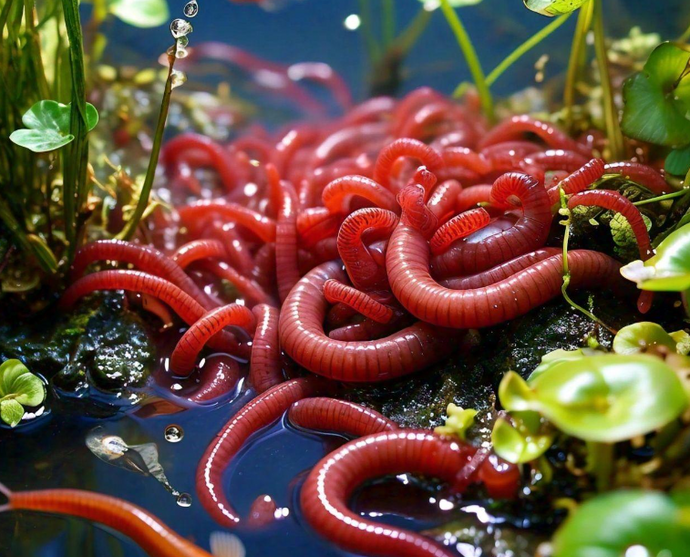Composting-ready red wigglers: For organic gardening
Utilizing Red Wigglers for Effective Organic Waste Disposal
These worms not only improve waste decay yet additionally yield beneficial worm spreadings, which can significantly enhance dirt wellness. Recognizing the nuances of setting up a successful worm bin and keeping an ideal habitat is critical for maximizing their advantages.
Advantages of Utilizing Red Wigglers
Among the most compelling benefits of using red wigglers for natural waste disposal is their amazing efficiency in composting. These worms, clinically called Eisenia fetida, are specifically adjusted for breaking down organic materials, allowing them to refine waste approximately twice their body weight daily. This fast decomposition not just speeds up the composting process however additionally produces nutrient-rich worm spreadings that substantially enhance dirt quality.
Furthermore, red wigglers contribute to a decrease in landfill waste. By drawing away organic products from landfills, they assist minimize methane discharges-- a powerful greenhouse gas. This ecological advantage is important in the fight against climate modification.
In addition, red wigglers are low-maintenance and can prosper in various settings, making them available for both novice and skilled composters. Their capacity to replicate quickly makes certain a constant populace, helping with recurring waste handling.
Establishing Your Worm Container
Developing an efficient worm container is essential for optimizing the advantages of composting with red wigglers. Ensure the container has sufficient drain holes to avoid excess dampness, as red wigglers prosper in a wet however not soaked environment.
(red wiggler worms for sale)Following, prepare the bed linen material, which serves as the worms' habitat and food resource. The container should be put in a dark, temperature-controlled area, ideally in between 55 ° F and 77 ° F, to preserve worm task.
Once the container is established up, introduce the red wigglers, enabling them to accustom to their brand-new setting. A well-kept container will certainly not just support the health of the worms but likewise facilitate reliable decomposition of natural waste.
(red wigglers eisenia fetida)
What to Feed Red Wigglers
An understanding of the appropriate diet plan for red wigglers is important for maintaining a healthy and balanced worm populace and maximizing composting performance. These products not just provide crucial nutrients but additionally contribute to the dampness balance within the worm bin.
It is critical to prevent specific foods that can harm the worm population. Red wigglers ought to not be fed meat, dairy items, oily foods, or refined items, as these can attract insects and develop undesirable smells. red wigglers. Additionally, citrus fruits and hot foods ought to be reduced, as their acidity can be damaging to worms
Keeping track of the worm container for food intake rates will help guarantee that red wigglers are receiving an appropriate diet plan while maintaining a reliable composting setting. Proper feeding methods are vital for cultivating a thriving ecosystem within the worm container.
Maintaining Your Worm Environment
A properly maintained worm habitat is vital for the health and wellness and performance of red wigglers. To make certain optimum conditions, it is crucial to keep track of temperature level, dampness, and oygenation within the worm bin. Red wigglers thrive in a temperature level variety of 55 to 77 degrees Fahrenheit. Exceeding this array can worry the worms, so it is essential to position the container in a suitable location far from direct sunlight and extreme temperatures.
Moisture degrees ought to be maintained consistent; the bed linens must be moist yet not soggy. A great general rule is to preserve wetness at around 70% to 80%. If the bed linen ends up being also damp, it can cause anaerobic problems that are damaging to the worms. Including dry carbon-rich materials, such as shredded paper or cardboard, can aid absorb excess dampness.

Making Use Of Worm Spreadings in Gardening
Rich in nutrients and valuable microorganisms, worm spreadings work as an outstanding organic plant food for gardening. Generated through the digestive procedures of red wigglers, these spreadings include a selection of vital nutrients, consisting of nitrogen, phosphorus, and potassium, which advertise durable plant growth. Unlike synthetic plant foods, worm castings use a slow-release mechanism, making sure that nutrients are offered to plants over an extended period, thereby reducing the threat of nutrient leaching and soil depletion.
Along with nutrient web content, worm spreadings boost dirt structure and oygenation, improving wetness retention and drainage. The microbial life existing in worm spreadings helps to suppress pathogens and advertises a healthy dirt ecological community, additional profiting plant health and wellness. When included right into the dirt or utilized as a top dressing, worm castings can dramatically improve seed germination rates, origin growth, and total plant vigor.
For ideal results, garden enthusiasts must apply worm spreadings at a price of 1-2 inches per square foot, blending them into the dirt or integrating them into potting blends. Overall, using worm spreadings is a green method to enhancing dirt fertility and making sure thriving browse this site yard settings.
Verdict
